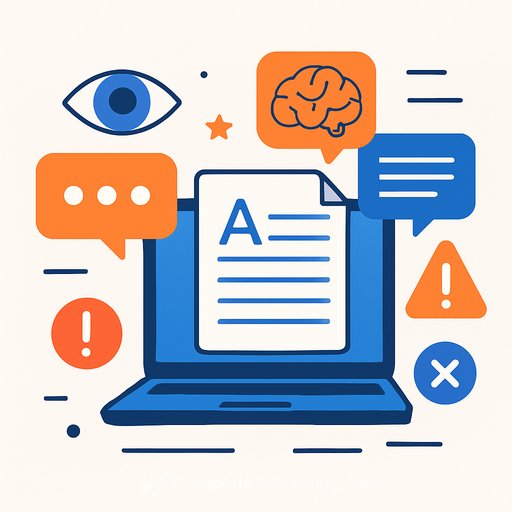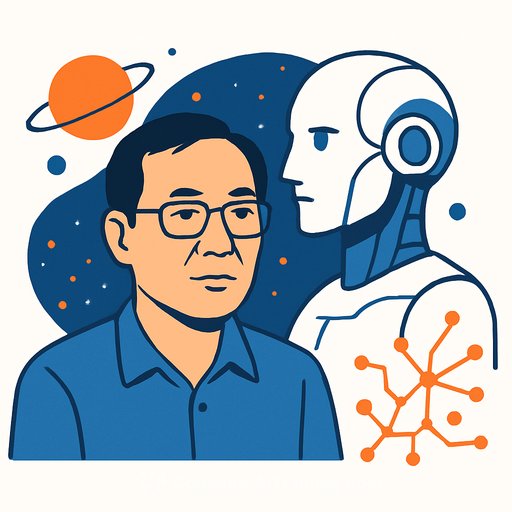The AI-generated actress Hollywood is arguing over
Tilly Norwood is an AI-generated "actress" that looks like any other Instagram-friendly 20-something. Plain feed. Vague bio. Lots of iced coffee.
Despite the ordinary look, her arrival triggered loud reactions across Hollywood. Unions issued statements. Agencies drew lines. The question for writers: Is this a real threat or a headline?
What Tilly actually is
UK-based Particle6 launched an AI talent studio called Xicoia to build "hyperreal digital stars" for film, TV, social content, ads, and games. Tilly is their first public-facing avatar, already dropped into synthetic "scenes," public settings, and short clips, with a growing social following.
Early chatter claimed agency interest, but top firms publicly pumped the brakes. Leaders at WME and Gersh said they represent humans and aren't signing an avatar. The signal: interest exists, but risk and optics are high.
The backlash in plain terms
SAG-AFTRA called out the project, saying creativity should remain human-centered and opposing "synthetics" replacing performers. British union Equity echoed that stance. Actors like Emily Blunt, Melissa Barrera, and Whoopi Goldberg voiced concern about losing human connection.
For writers, this reads as: studios will test boundaries, but unions, talent, and agencies still have leverage. Public sentiment matters. So does contract language.
Who is actually at risk right now
High-profile stars are unlikely to be replaced soon. The near-term pressure sits on background actors, voice talent, localization, and filler content. That's where "body scanning," voice cloning, and automated dubbing can cut costs.
Under recent agreements, scanning and AI dubbing can occur with consent and compensation, but many see loopholes. Expect more fights over consent scope, reuse, and residuals.
What this means for writers
Studios will test AI for volume tasks: promos, variations, localization, background dialogue, and social "slop." They'll still pay for strong voice, reported work, and access-driven storytelling. Your job is to make yourself hard to swap out.
Make yourself hard to replace
- Build a voice people can point to. Publish essays, newsletters, and threads under your name. Voice is your moat.
- Pitch work AI can't source on its own. Reported pieces, interviews, set access, opinion with receipts, and cultural analysis.
- Own the audience. Email list, lightweight personal site, consistent publishing cadence.
- Learn AI as a tool, not a crutch. Use it for research synthesis, beat sheets, line lifts, and alt takes-but ship your taste.
- Offer the "human layer." Script polishes for synthetic performances, character bibles, tonal QA, safety and bias reviews.
- Package outcomes. "Writer + narrative system" services: prompt pipelines, style guides, and A/B-tested social copy that tie to results.
Contract checkpoints for writers
- AI training and reuse. No training on your work without written consent and negotiated fees. No dataset reuse unless approved.
- Voice/name/likeness. Ban synthetic replicas of your voice or name without consent, credit, and compensation.
- Disclosure. Require notice if generative tools touch your assignment or derivatives.
- Credit and residuals. Ensure on-screen and metadata credit; define residuals for derivatives and foreign versions.
- Watermarking and logs. Watermark synthetic outputs; maintain prompt/output logs for disputes.
- Review and kill fees. Right to review any synthetic use of your material; kill fee if terms are breached.
- Data retention. Define storage limits, access controls, and deletion timelines for your drafts and assets.
- Indemnity. You aren't liable for a client's AI misuse; they indemnify you for their tools and vendors.
If synthetic actors stick, new writing work appears
- Persona and world bibles. Consistent voice, backstory, and boundaries for AI characters.
- Prompt chains. Structured flows for performances, fan engagement, and safe replies.
- Performance polish. Human passes for beats, subtext, and comedic timing.
- Interactive scripts. Branching dialogue, live event copy, and compliance-safe ad variants.
- Community scripts. Q&A formats, release notes, and episodic arcs for ongoing "avatar" storylines.
Signal vs noise
The panic around Tilly is loud. The actual threat vector is quiet: background work, localization, marketing variations, and low-stakes content. That's where budgets get trimmed first.
Meanwhile, new consumer AI feeds keep pushing synthetic media. Unions are pushing back. Expect a tug-of-war while workflows shift behind the scenes.
Do this this week
- Update your contract template with the AI clauses above.
- Publish one opinion piece that shows your voice and POV.
- Create a 2-email welcome sequence for your list.
- Test one AI tool on a draft for speed, not voice.
- Document your personal AI policy and share it with clients.
- Ask your rep or union contact about current AI guardrails.
Union and industry resources
Skill up without losing your voice
If you're a writer, it pays to learn the tools and keep your taste intact. Here's a curated list of writing-focused tools and courses:
Bottom line: Theaters run on human connection. Pipelines run on efficiency. Write the work only you can write-and learn the systems that will process everything else.
Your membership also unlocks:






